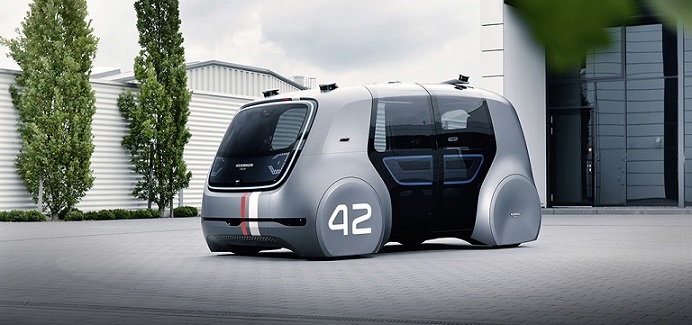University of St. Gallen, Switzerland
If you discuss autonomous vehicles in today's professional or business environment, the following questions come up quickly: "When will we have autonomous vehicles?" and "Where will they be used first?" We can well imagine that autonomous vehicles will be first used as "robotaxis," except for vehicles at, say, large factory sites or harbors.
In terms of imagining the areas of application for autonomous vehicles - robotaxis could be the starting point
Why? If autonomous driving at Level 5 is technically possible, there will be vehicles without steering wheels and pedals. There will be no need for a driver. All passengers in the vehicle will have equal status. This idea has to be taken into consideration right at the start, in terms of imagining the areas of application for autonomous vehicles. Robotaxis could be the starting point.
What are robotaxis? We understand robotaxis to be vehicles that are specially built to transport up to 10 passengers for short-distance trips within cities' downtown areas. They handle the final leg in a journey, such as to transport passengers who arrive in town by train from the train station to their residence.
In the photo below, VW Sedric shows what VW engineers think an electric robotaxi may look like.

VW Sedric (source: Volkswagen)
Robotaxis will be ordered by app or whatever technology replaces apps in a few years. Autonomous vehicles arrive at the pick-up point, load passengers, bring them to their desired destination, and then pick up the next passengers. When not in use, they park outside the city.
Even from this simple explanation of robotaxis, it is clear that they will compete with traditional taxis. But what is also clear is why mobility platforms such as Uber have made massive investments in autonomous vehicles as a precursor to robotaxis.
Transport to the final destination, which usually means in the inner-city, will be automated. Drivers, who constitute a significant expense for taxi companies and companies like Uber, will no longer be needed. The costs per kilometer or mile will decrease.
Because of their high degree of digitalization, mobility platforms like Uber and Lyft also have the advantage of having very precise data about passenger travel habits: who goes where and how often. Accordingly, the use of robotaxis is not only about automation, but about optimization and personalization. The success of many Internet giants has shown that the combination of automation, optimization, and personalization carries a significant promise of success.
Robotaxis will be ordered, used, and that's it. It will no longer be necessary to own a vehicle
If sufficient numbers of robotaxis are available in many cities and communities, the trend we see today in car-sharing will be even more pronounced: the separation of ownership and usage of vehicles. Today, it is still customary for people to own a car in order to use it. You have to purchase a vehicle, pay for regular maintenance, and find a place to park it. Robotaxis will be ordered, used, and that's it. It will no longer be necessary to own a vehicle. You just use it. This simple viewpoint, which we find easy to understand, will change the fundamental structure of the automobile industry.
It gives rise to several questions such as "Who will own the fleets of robotaxis?", "Who will operate them?" and "Who handles the interface with the customer?". If you just use a vehicle instead of owning it, it is no longer an expression of your individual personality nor, as is often the case today, of what you can afford.
Another effect of using robotaxis will be new possibilities for urban planning. Robotaxis are situated on the border between public and private transportation. Sometimes this is called individual public transportation. What is clear is that it will certainly be possible to lessen the need for individual traffic in urban areas, especially in terms of "parking traffic." Train stations will play a crucial role in the success of robotaxis. We think that they will again become genuine mobility hubs and not just shopping paradises.
To conclude this blog, we would like to turn to a social and societal aspect. If robotaxis become reality, those who cannot enjoy individual mobility today, such as people with special needs, the elderly and children, will benefit from increased personal mobility. In this context, the advantages in individual mobility that robotaxis afford can be seen as an instrument of social justice.
It's true that no one has a crystal ball to tell the future. Though, in the course of writing our book, Autonomous Driving – How the Driverless Revolution Will Change the World, we believe that there is a very strong chance that robotaxis will be the next big thing.




